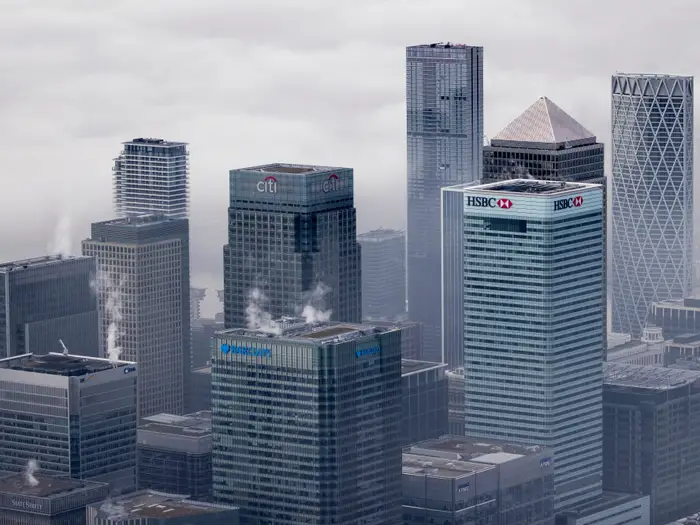‘Community’ is the latest trend that creator-economy startups and platforms are betting big on: ‘Creators are the new priests’

- Feeling lonely? So is everyone else — and we’re seeking out communities to fill the void.
- Creator-economy startups like Patreon and Kajabi have prioritized community tools this past year.
- Business Insider spoke with founders, creator-economy experts, and investors about the recent shift.
Community is the new favorite word in the creator economy.
Community has been at the forefront of press releases in recent months, from product updates to startup rebranding.
Patreon CEO Jack Conte announced in September that the creator subscription platform would now be focused on community tools that make the platform more interactive and social.
“We’re a decade old,” Conte said at the time to Business Insider. “We’re expanding beyond membership and we’re thinking of ourselves more now, not as a membership company, but as a creator company, as a fandom company, as a company that helps creators and their fandoms build energized communities and be successful.”
Patreon quickly updated its branding and mobile app, prioritizing features such as group chats and in-app profiles.
Startups in the creator economy are capitalizing on our desire to belong and feel connected — and they are hiring creators to build, lead, and profit from these spaces.
Kajabi, a popular online course platform, recently announced that its creators earned more than $6 billion through the use of its platform. Kajabi introduced its own “Communities” feature after acquiring online community startup Vibely in 2022, which provides creators with tools to directly engage with their students and fans through exclusive group chats, calls, and a central hub.
“We live in an era of information overload and the attention economy,” said Teri Yu, Kajabi’s head of product and communities and former CEO of Vibely. “Being able to go to a community to find real recommendations from real people about your skincare products, or how to actually learn the five steps to creating a book that’s not just a sponsored by X and Y company — those are all things that make communities stand out today.”
Fourthwall, which began as a creator merchandise startup, also unveiled a tool earlier this month that allows creators to build their own branded apps, where they can send notifications announcing new merch drops or content and interact directly with fans who pay a monthly or annual membership fee.
“Keeping in touch with your community is extremely difficult,” Fourthwall cofounder Eli Valentin told Business Insider.
Rather than creating websites for creators, Fourthwall’s apps for creators help to streamline a creator’s members-only content to a unique, standalone location with its own notifications that do not get lost in an inbox or on another platform. In theory, this could help creators increase engagement among their paying members, increasing their likelihood of interacting with the content and continuing to pay those recurring fees.
“Thriving communities work when people are participating in it,” Valentin went on to say.
In an age of oversaturated social networks, AI chatbots, and a rising loneliness epidemic, the wave of creator-economy startups pivoting toward community-building products should come as no surprise.
There’s a reason why people prefer group chats or niche online communities on apps like Discord to posting photos and videos into the void. At the same time, social media behemoths like Meta’s Instagram are expanding features like Close Friends and DMs.
Underneath the noise, however, startups pursuing nebulous goals of community building are on to something. Founders, creators, and investors are all watching and listening.
What even is a ‘community,’ anyway?
While community has become a buzzword thrown around by founders of creator-economy startups and tech executives, different people have different definitions of what it is.
For some, community is simply a synonym for “audience,” or the people who follow and consume your content. Others are people who leave comments on YouTube videos or Instagram posts. Brands may even refer to their customers as a community.
Yu, on the other hand, defines “real community” as peer-to-peer interactions in which people interact with one another — “developing relationships, supporting one another, and helping one another answer questions.”
Hugo Amsellem, a creator-economy startup advisor and angel investor who is launching a fund to support startups addressing the loneliness epidemic, defines community as a group of people who share a common identity.
“People should feel something,” says Patreon’s Conte. They should feel a sense of belonging to something larger than themselves. And we want every Patreon supporter to feel like they’re in their own little corner of the internet.”
Those are lofty goals. However, these platforms are not optimistic about communities because of warm and fuzzy feelings. There’s also a market there.
People are willing to pay for community
“Belonging is the new luxury,” wrote travel startup Dharma in a pitch document sent to investors via Notion.
According to Kajabi, the communities on its platform contributed $87 million to the $6 billion in creator revenue earned by its users.
Rob Lennon, who uses Kajabi and Discord to manage a community of AI enthusiasts, has earned over $500,000 by selling courses and recurring memberships that unlock features like group chats, one-on-one sessions, and unique AI bots. (BI confirmed these earnings with Lennon’s documentation.)
That is possible due to Lennon’s monthly recurring earnings from Kajabi’s membership feature.
This model is used by platforms such as Patreon, Fourthwall, OnlyFans, and Substack. Other platforms have followed suit, such as Teachable, which in October launched a membership tier for its users selling courses.
Even Meta and TikTok have released tools to assist creators in earning money through monthly subscriptions, which frequently unlock community tools such as exclusive group chats, whether in-app or by redirecting fans to a Discord link.
As creator-economy startups struggle to break even due to dwindling VC funding and economic shifts, these recurring payments could help some of them.
Yu, for example, stated that when a Kajabi community accepts new members, approximately seven out of ten return the next day, and six out of ten remain active the following month.
Meanwhile, investors from various industries are betting on what will make us all feel less lonely.
“In Silicon Valley, founders and investors all recognize there’s a loneliness problem,” Yu went on to say.
Will creators, however, be included in that equation?
Creators aren’t just making content — they are building communities with cult followings
Yes, the internet has most likely contributed to our feelings of isolation, but Amsellem sees creators as a unique solution to get us back on track.
“We need a little bit of everything,” Amsellem says, adding that online communities and social platforms “are not going to solve loneliness” on their own.
Instead, he says, the online and niche communities we’ve created will require “physical embodiment” and “rituals” to give us a sense of belonging.
And creators may be the ones to guide this wave.
“Creators are the new priests,” Amsellem pointed out. “Of course, it’s not about religion, it’s about assembling people.”
Yu sees creators similarly: “We always act with the premise that creators will be the future community leaders.”
For example, Lennon’s Kajabi community has around 3,000 members, which is roughly the size of a small town in the United States. According to the company, Kajabi hosts over 32,000 communities and over 2 million community members.
And some creators are bringing their fans and community together outside of the screen. Marta Biino of BI visited YouTubers KSI and Logan Paul’s Prime pop-up in London last week, where a line of fans stretched around the block. Twitch streamer Kai Cenat gathered thousands of fans in New York City in August for a giveaway that quickly spiraled out of control, resulting in injuries and arrests.
The power of creator-led communities is undeniable. It is now up to creators and startups to harness that momentum and use it to build and sustain safe, sustainable, and meaningful communities.





